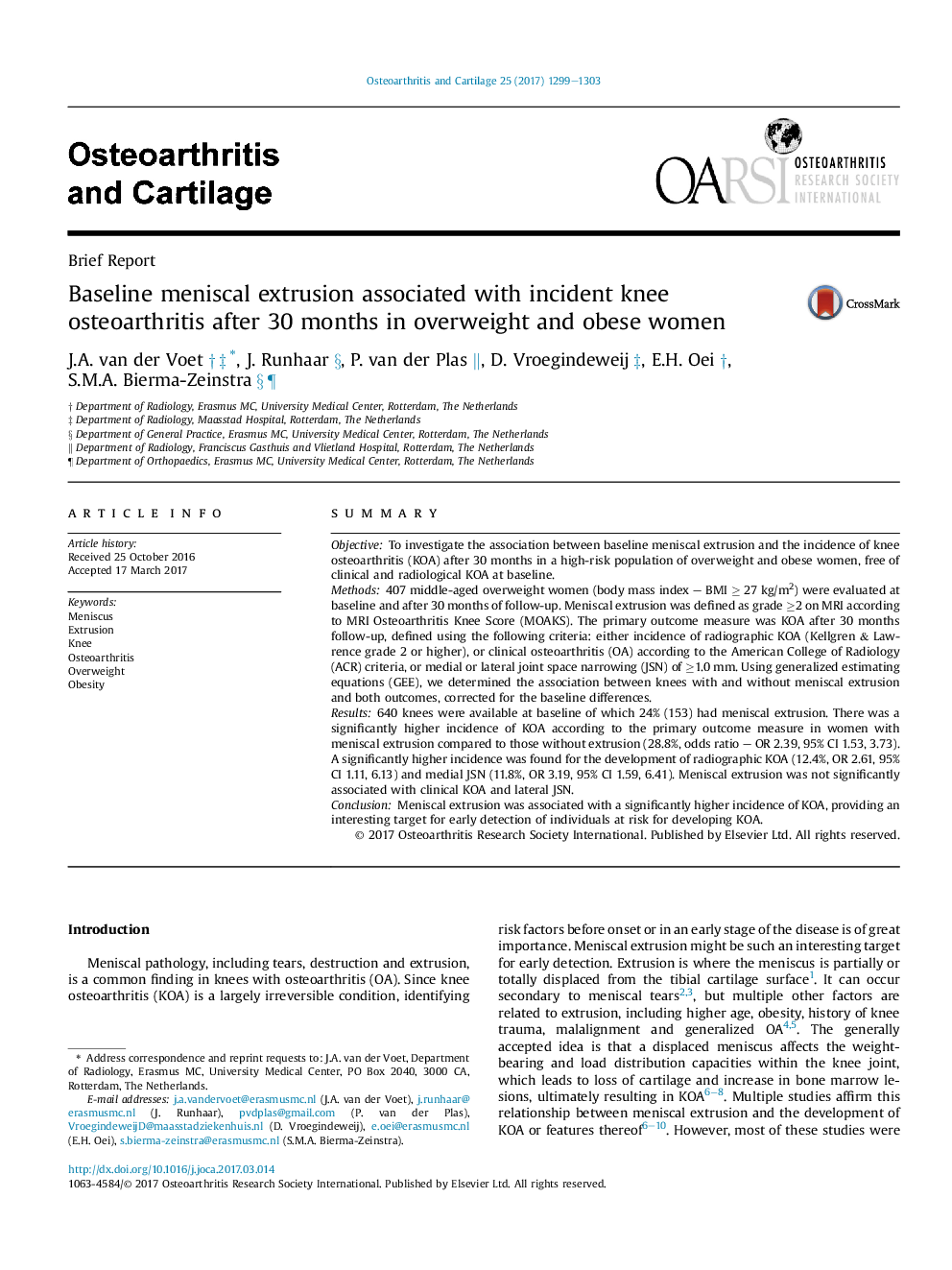| Article ID | Journal | Published Year | Pages | File Type |
|---|---|---|---|---|
| 5669285 | Osteoarthritis and Cartilage | 2017 | 5 Pages |
SummaryObjectiveTo investigate the association between baseline meniscal extrusion and the incidence of knee osteoarthritis (KOA) after 30 months in a high-risk population of overweight and obese women, free of clinical and radiological KOA at baseline.Methods407 middle-aged overweight women (body mass index - BMI â¥Â 27 kg/m2) were evaluated at baseline and after 30 months of follow-up. Meniscal extrusion was defined as grade â¥2 on MRI according to MRI Osteoarthritis Knee Score (MOAKS). The primary outcome measure was KOA after 30 months follow-up, defined using the following criteria: either incidence of radiographic KOA (Kellgren & Lawrence grade 2 or higher), or clinical osteoarthritis (OA) according to the American College of Radiology (ACR) criteria, or medial or lateral joint space narrowing (JSN) of â¥1.0 mm. Using generalized estimating equations (GEE), we determined the association between knees with and without meniscal extrusion and both outcomes, corrected for the baseline differences.Results640 knees were available at baseline of which 24% (153) had meniscal extrusion. There was a significantly higher incidence of KOA according to the primary outcome measure in women with meniscal extrusion compared to those without extrusion (28.8%, odds ratio - OR 2.39, 95% CI 1.53, 3.73). A significantly higher incidence was found for the development of radiographic KOA (12.4%, OR 2.61, 95% CI 1.11, 6.13) and medial JSN (11.8%, OR 3.19, 95% CI 1.59, 6.41). Meniscal extrusion was not significantly associated with clinical KOA and lateral JSN.ConclusionMeniscal extrusion was associated with a significantly higher incidence of KOA, providing an interesting target for early detection of individuals at risk for developing KOA.
